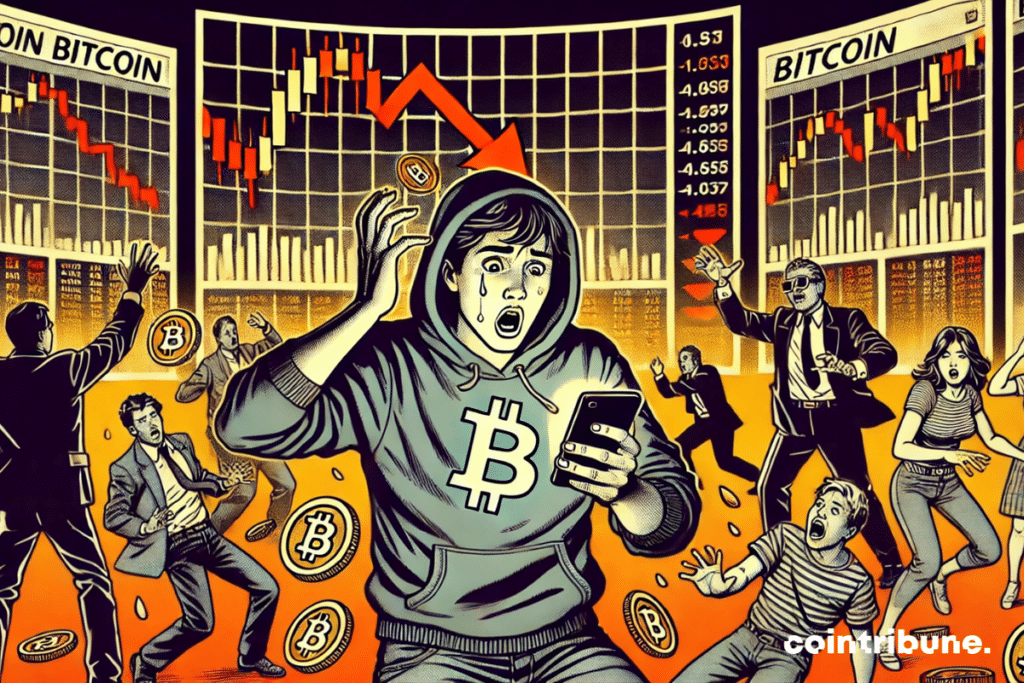Institutional Investors Drive Bitcoin’s Future Amid Retail Decline
The financial markets sometimes reserve paradoxes. While Bitcoin is witnessing a new surge, crossing the symbolic threshold of $100,000, one surprising element stands out: the absence of retail investors. After the Federal Open Market Committee (FOMC) meeting, the Bitcoin futures market experienced a rapid rise, with an increase of $1.2 billion in just 24 hours. However, instead of widespread enthusiasm, the data reveals a sharp decline in small investors, whose activity has dropped by 50 % since November 2024. This phenomenon underscores a profound transformation of the market, where financial institutions are taking over from individuals. Should this be seen as a mere cyclical adjustment or a lasting change in the evolution of Bitcoin?

Institutions Propel Bitcoin Futures
The Federal Open Market Committee (FOMC) meeting has rekindled speculative interest around Bitcoin, causing a massive influx of capital into the BTC futures market. In just 24 hours, open interest, which measures the total open positions on futures contracts, surged by $1.2 billion, recording an increase of 8% to reach a peak of $65 billion. This sudden progress reflects a marked return of institutional investors, who have strengthened their long positions in response to the economic signals issued by the U.S. Federal Reserve.
In this bullish context, Bitcoin surpassed $106,500, marking a break from the consolidation phase of recent weeks. Meanwhile, the aggregated funding rate has increased, confirming a clear dominance of buyers in the derivatives market. However, despite this rise of institutional players, retail investors remain on the sidelines. According to Glassnode data, the transaction volume from wallets holding less than 0.1 BTC has dropped by 48 % since November 2024. This disenchantment is surprising, especially since previous bullish cycles of Bitcoin have always been accompanied by a resurgence of interest from the general public. This observation is shared by Quinten Francois, a renowned crypto commentator, who highlights in a post on social media platform X (formerly Twitter) on January 26, 2025, that “despite Bitcoin trading above $100,000, the interest of retail investors has reached its lowest level in three years.” The current surge of Bitcoin seems to be driven by new engines, where institutional dynamics gradually supplant the activity of individuals.
Why Are Retail Investors Shying Away from the Market ?
This decline in retail investor activity represents a major shift in Bitcoin’s market dynamics. Several factors may explain this phenomenon, starting with the unit bias. This psychological principle drives many new investors to prefer buying assets in whole units rather than in fractions. With Bitcoin exceeding $100,000, some believe its price is now out of reach. In search of opportunities perceived as more accessible, they turn to cheaper altcoins, often swayed by valuation predictions disconnected from market realities.
At the same time, the rise of spot Bitcoin ETFs is redistributing investment flows. Between November 2024 and January 2025, the total capitalization of BTC ETFs surged from $70 billion to $125 billion, representing a 78% increase, according to CoinGlass. This development alters the way investors are exposed to Bitcoin and favors regulated financial products over direct purchases on exchanges. Consequently, a massive movement of funds has been observed, reducing BTC balances held on platforms from 3.1 million to 2.7 million units in just seven months. This phenomenon represents a shift of the market towards increased institutional adoption, where ETFs and centralized custody solutions are overtaking self-custody.
Bitcoin now relies more on institutional flows than on the enthusiasm of retail investors. This structural evolution could profoundly reshape its market. On one hand, the heightened presence of institutions could reduce volatility, as these actors favor long-term investment strategies. On the other hand, a return of retail investors remains possible, particularly in the event of a price correction or a resurgence of interest in direct Bitcoin purchases. The future of the market will therefore depend on the evolution of overall sentiment, the attractiveness of Bitcoin to new entrants, and the role that ETFs and other institutional vehicles will continue to play. If this trend continues, the mother crypto could enter a maturation phase, where speculation gradually gives way to more institutionalized and regulated adoption.
Maximize your Cointribune experience with our "Read to Earn" program! For every article you read, earn points and access exclusive rewards. Sign up now and start earning benefits.
Diplômé de Sciences Po Toulouse et titulaire d'une certification consultant blockchain délivrée par Alyra, j'ai rejoint l'aventure Cointribune en 2019. Convaincu du potentiel de la blockchain pour transformer de nombreux secteurs de l'économie, j'ai pris l'engagement de sensibiliser et d'informer le grand public sur cet écosystème en constante évolution. Mon objectif est de permettre à chacun de mieux comprendre la blockchain et de saisir les opportunités qu'elle offre. Je m'efforce chaque jour de fournir une analyse objective de l'actualité, de décrypter les tendances du marché, de relayer les dernières innovations technologiques et de mettre en perspective les enjeux économiques et sociétaux de cette révolution en marche.
The views, thoughts, and opinions expressed in this article belong solely to the author, and should not be taken as investment advice. Do your own research before taking any investment decisions.